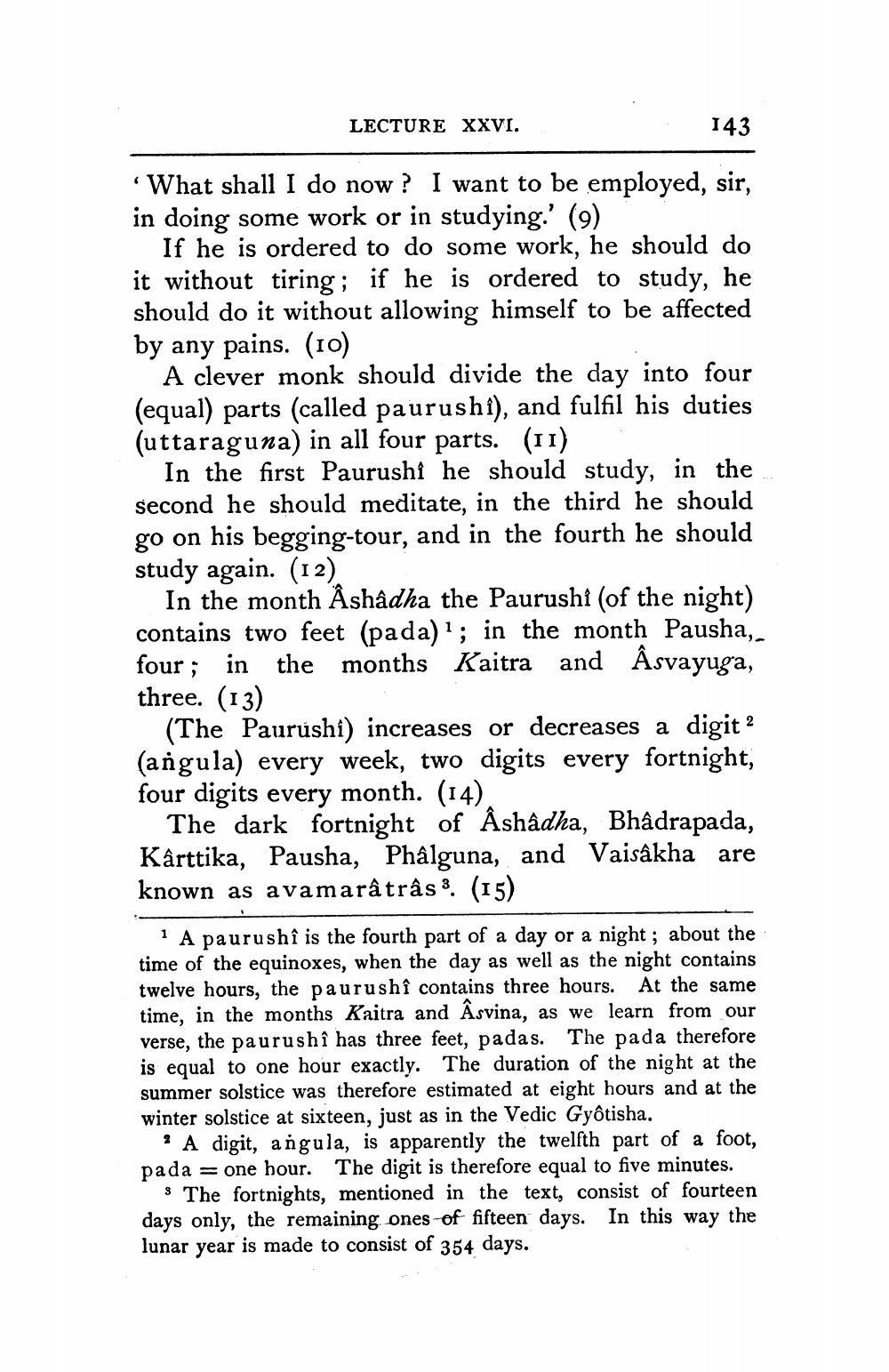________________
LECTURE XXVI.
143
* What shall I do now? I want to be employed, sir, in doing some work or in studying.' (9)
If he is ordered to do some work, he should do it without tiring; if he is ordered to study, he should do it without allowing himself to be affected by any pains. (10)
A clever monk should divide the day into four (equal) parts (called paurushi), and fulfil his duties (uttaraguna) in all four parts. (11)
In the first Paurushi he should study, in the second he should meditate, in the third he should go on his begging-tour, and in the fourth he should study again. (12)
In the month Ashâdha the Paurushi (of the night) contains two feet (pada); in the month Pausha, four; in the months Kaitra and Âsvayuga, three. (13)
(The Paurushi) increases or decreases a digit 2 (angula) every week, two digits every fortnight, four digits every month. (14).
The dark fortnight of Åshâdha, Bhâdrapada, Kârttika, Pausha, Phâlguna, and Vaisakha are known as avamarâtrâs 3. (15)
1 A paurushî is the fourth part of a day or a night ; about the time of the equinoxes, when the day as well as the night contains twelve hours, the paurushi contains three hours. At the same time, in the months Kaitra and Asvina, as we learn from our verse, the paurush î has three feet, padas. The pada therefore is equal to one hour exactly. The duration of the night at the summer solstice was therefore estimated at eight hours and at the winter solstice at sixteen, just as in the Vedic Gyôtisha.
? A digit, angula, is apparently the twelfth part of a foot, pada = one hour. The digit is therefore equal to five minutes.
3 The fortnights, mentioned in the text, consist of fourteen days only, the remaining ones of fifteen days. In this way the lunar year is made to consist of 354 days.




